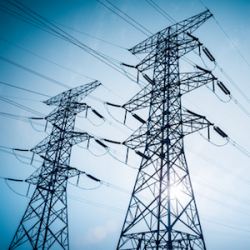Some policy issues are so complicated, there appears to be no good or easy solution. Take foreign policy, for example. With nearly 200 countries in the world, each with its own strategic goals and interests, it is nearly impossible either to ensure that everybody gets along or to craft policies that advance American interests while treating everyone else fairly. Deception and communication barriers, such as language and culture, exacerbate the problem. Indeed, statecraft is a job full of contradiction and frustration.
Not so for energy policy. This is one area in which, if so desired, America could go it alone. Better yet, the solution to America's energy problem would simultaneously solve climate change. That's a win-win. Here's how to do it:
1. Build Generation IV nuclear power plants. There are several different kinds of Generation IV nuclear power plant designs possible, such as pebble bed and molten salt, but they all have one thing in common: They are meltdown-proof. This is not just "theoretical"; they are physically incapable of suffering a catastrophic failure because they have been fundamentally re-engineered. For instance, if a molten salt reactor fails, cleanup involves a broom and dustpan. China is building a pebble bed reactor that may go online later this year. And despite what activists say, nuclear waste can and should be stored safely at Yucca Mountain.
2. In the meantime, embrace fracking and natural gas. Like all fossil fuels, natural gas is an imperfect solution. It emits greenhouse gases, carbon dioxide when burned and methane from accidental leaks. But it's a temporary bridge fuel to a carbon-free future. Also, it is better for the environment than coal, and the fracking revolution has driven down the price of fossil fuels, which makes Vladimir Putin unhappy. Making Putin unhappy is a totally righteous thing to do.
3. Upgrade energy infrastructure. Many technological hurdles remain in the way of a carbon-free future. Solar and wind power are intermittent. To address that, we must develop batteries or capacitors capable of storing energy when the sun isn't shining or the wind isn't blowing. (Developing better batteries will also encourage the production of more electric vehicles.) Furthermore, the power grid must be upgraded to carry electricity over long distances. A large solar installation in Arizona, for instance, would need to use ultra-high-voltage direct-current (UHVDC) power lines, rather than the alternating current (AC) lines typically used.
4. Invest in solar and fusion research. Solar power is not yet efficient enough. (Highly efficient solar panels are outrageously expensive.) A breakthrough creating cheap, efficient solar power is surely on the horizon, but it has yet to happen. Fusion power, which harnesses the same reaction that powers the sun, turns out to be rather difficult to sustain on Earth. Both are research problems that the federal government can help to resolve by providing R&D funding (as opposed to subsidizing companies). In the distant future, solar and fusion will likely play a major role in powering the planet.
In summary, America's energy policy should be to use natural gas as we build meltdown-proof nuclear reactors and upgrade our infrastructure for a future powered exclusively by solar, wind, and fusion.
The perfect energy solution is really quite simple. Implementing it only requires political will and scientifically savvy voters. Unfortunately, both are in short supply.

